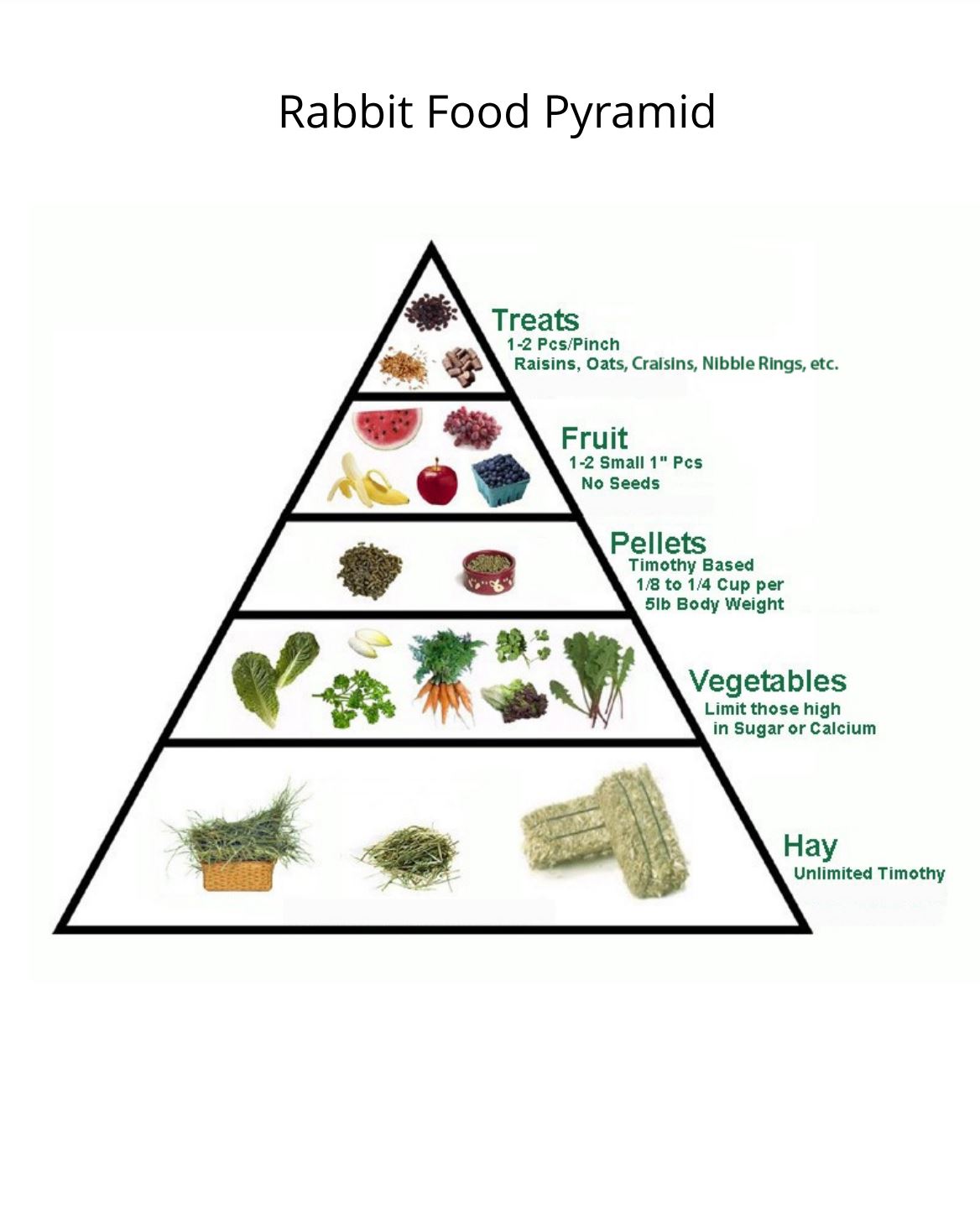Rabbit Diets: What Do Rabbits Eat?
Rabbits eat a variety of fibrous foods that include timothy hay, pellets, leafy greens, and the occasional fruit treat.
Our bunny friends have sensitive digestive systems, so it’s very important to know what and how much of a certain food they need to eat to stay healthy and happy.
On This Page:
What Rabbits Eat: Diet Myths Debunked

What Do Rabbits Eat?: Rabbit Diet Overview
Each part of your rabbit’s diet plays a role in maintaining general health, avoiding certain serious illnesses, or adding to your rabbit’s mental and emotional well-being.
House rabbits eat a variety of fibrous foods to help keep their gut moving correctly.
The general ratio of foods in your rabbits diet is:
- 80% Timothy or Orchard Grass Hay
- 10% High-quality pellet
- 10% Fresh, leafy greens
- 0-5% Fruit as a treat.
What Do Rabbits Eat?: Diet Myths Debunked
Myth: Rabbits eat carrots as a main food group:
Truth: It’s a common misconception that’s been perpetuated by the media with deadly consequence to rabbits. Feeding only carrots is like only feeding your child fruit juice. You may think it’s healthy, but it’s just sugar. Rabbits love carrots, but that doesn’t mean it’s good for them. Read all the different parts of what rabbits eat and see where carrots fit into their diet (hint: as a treat).
Myth: Hay is only good at bedding:
Truth: Hay is the #1 most important food staple in a rabbits diet. But not just any hay can be fed to a rabbit. You need to give them either Timothy Hay or Orchard Grass Hay. Coastal and/or Straw hay doesn’t have the correct nutritional components for rabbits. Due to hay’s low absorption, high mildew and dust components, it’s actually not a great bedding option. Check out our page about Different Types of Litters to use for your rabbit.
Myth: Lettuce is good for rabbits
Truth: Actually, some lettuces like iceberg lettuce, contain lactucarium which can be toxic to rabbits. That’s why we normally say to feed Dark, Leafy Greens, as they have better nutritional content for rabbits. However, certain dark leafy greens contain toxins known as oxalates and should be fed sparingly. Check out our Good and Bad Vegetable Handout, as well as our Fresh Foods page to learn which types of lettuce and other greens you should feed your bunny.
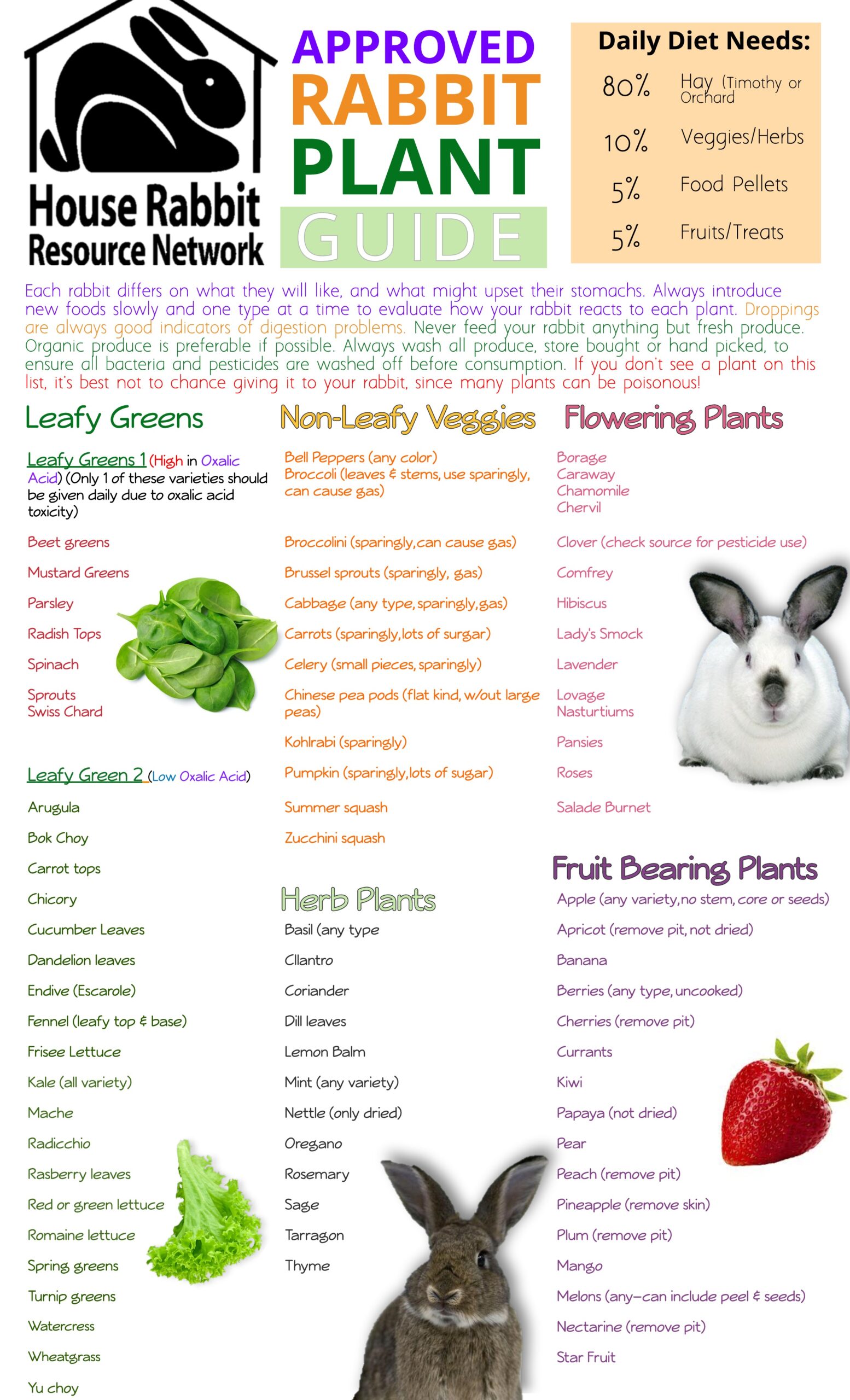
Downloadable Diet Handouts
Click on the below links to see the handout and download.
Food Pyramid for Rabbits Handout
HRRN Approved Rabbit Plant Guide
Rabbit Diet Overview Handout Continued (Page 2)
Recommended Veggie and Fruit List
More Information on Rabbit Food Groups
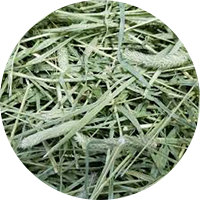
The Importance of Hay
Perhaps the single most important item in the rabbit diet is grass hay, and it should be fed in unlimited quantities to your rabbit. Timothy hay should be 80% of your rabbit’s diet.
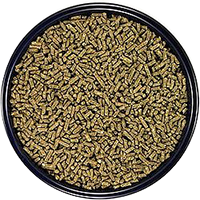
Rabbit Pellets
A high-quality rabbit pellet provides trace nutrients, vitamins and minerals that a rabbit might not get if fed only hay and fresh foods. However, very little pelleted food is required for good health.
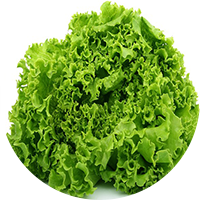
Fresh Foods
Fresh foods are important because they provide additional nutrients as well as added moisture in the diet – which is good for kidney and bladder function. The bulk of fresh foods should be made up of leafy greens.

